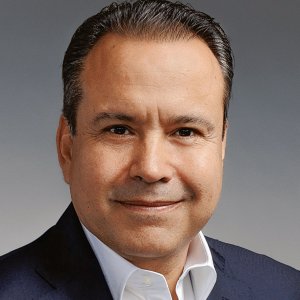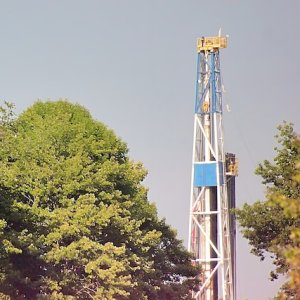
Mexico’s Hydropower Modernization Examined
 By Cas Biekmann | Journalist and Industry Analyst -
Fri, 10/01/2021 - 16:34
By Cas Biekmann | Journalist and Industry Analyst -
Fri, 10/01/2021 - 16:34
Hydroelectric power generation remains a cornerstone of clean energy generation around the world. Mexico is no exception, with President López Obrador highlighting state-owned capacity as a crucial component of the clean energy transition. But producing hydroelectricity is not without its challenges. What role can this type of energy play in Mexico’s future-proof energy mix?
Hydroelectric power is produced by using flowing water to drive turbines. This is often done at dams and water reservoirs, although small-scale applications without either of these are possible, too. Unlike wind and solar-based energy, hydropower is a stable form of energy generation that can be ramped up or down when needed. However, comparing these technologies is complex due to their highly different nature. As water used for power production can be accumulated, it also serves as a form of storage. Technology such as pumped hydro, which interconnects one higher-placed and one lower reservoir, plays into this by allowing grid operators to balance the system effectively.
Hydroelectric capacity has an important role in the global clean energy mix of almost 1.2 million MW of installed capacity, according to the International Renewable Energy Agency (IRENA). Mexico currently has 12,614MW of hydro capacity in operation, which is about 14 percent of its energy mix. Most of this capacity is in the states Chiapas and Guerrero and all but one 109MW power plant are owned and operated by CFE. Between January and April 2021, hydroelectricity produced 8.9 percent of all the MW/h produced in the country.
When President López Obrador visited CFE’s dams in Chiapas earlier this year, he spoke about his enthusiasm for state-owned hydroelectric capacity. “We are visiting these hydroelectric dams because we are going to modernize them, to change their turbines that have been working for many years already. We want to generate more electricity with water, which means producing cheap and clean electrical energy.”
Mexico is committed to its clean energy transition but the government favors a state-centric approach in the energy sector, which happens to benefit hydro development. The López Obrador administration has touted CFE’s clean energy generation potential, but private companies argue that their mostly wind and solar-based energy projects are essential to cleaning up Mexico’s energy dispatch, at cheaper costs to boot.
Hydropower is not without its downsides. For one, hydroelectric facilities are quite costly to develop. “If we analyze only the energy price component, hydropower struggles to compete with wind and solar. This is simple mathematics: to build a large solar farm, the investment is roughly US$800,000 per MW. For a wind farm, it is US$1.2 million per MW. Hydro still hovers around US$2.4 million per MW, two times the cost of wind and three times the cost of solar by comparison,” said Jacobo Mekler Weisburd, Partner at COMEXHIDRO, to MBN last year.
The social and environmental aspect of hydroelectric dams has often been the subject of heated debate, as well. Displacement of people, deforestation, noise effluence and depletion in soil fertility are some of the most important grievances. Many power plants were constructed in the past, when these issues were somewhat overlooked by the government. “At the time, communities or social stakeholders were not taken into consideration and international best practices were absent. For example, some towns, including churches and graveyards, were flooded after the people were moved away. People do not forget this easily, leading to a lack of trust in these projects,” Mekler said. Recent news about droughts impacting how effective water-based power generation can be only adds to the social and environmental issues. According to NASA, 85 percent of Mexico is facing droughts, which also depletes water reservoirs and threatens the viability of hydroelectric dams.
Through its inherent properties, hydropower does offer several advantages that intermittent wind and solar power plants cannot achieve on their own. Nonetheless, the benefits from ancillary services and capacity are not yet profitable in the Mexican market. “If you examine Mexico’s weak grid system, you would think that hydropower would be much appreciated because it brings stability to the grid. Unfortunately, the market does not pay for this as it should,” noted Mekler. “This might change given President López Obrador’s push for more government-owned hydroelectric projects,” he added.
Does Modernization Make Sense?
The previously mentioned hurdles would make new large-scale hydropower plant developments unlikely. But CFE does not need to flood new areas or invest in greenfield projects because it already has plenty of capacity in place, although it would still need to take environmental factors into account. The main issue of these power plants is their age, affecting how efficiently they produce energy. Aware of this issue, CFE is investing heavily to update the country’s installed capacity. "It will be necessary to change turbines. By using the same reservoirs, we could produce twice as much energy as before," said the president at a meeting with executives from the Hydro-Québec company. As of August 2021, López Obrador had included the modernization of 12 hydroelectric power plants in the 2021 Economic Package.
The president had previously reserved US$1 billion for the renovation efforts, which was generally well-received by energy analysts. “Hydropower renovation does contribute to environmental sustainability and energy security, in contrast to the construction of gas-fired power plants. This increases our reliance on US-imported natural gas,” said Ruben Cruz, KPMG’s Mexico Energy and Natural Resources Lead Partner, at Mexico Energy Forum. Compared to the “five or six” combined cycle plants and the massive 1,000MW solar farm CFE aims to build, the cost is rather attractive too. Through the modernization plan, CFE aims to add significant clean energy capacity to its portfolio. “The additional GWh resulting from the modernization are equivalent to six wind farms or eight 100MW photovoltaic parks. The power plants to be modernized will be inaugurated no later than 1Q24,” said a CFE executive earlier this year, still referring to 14 power plants rather than the 12 reported more recently.
CFE plans to add further hydroelectric capacity to its portfolio, albeit at a smaller scale. The projects would be carried out along with agricultural firms and add just over 200MW of new capacity. Smaller projects of this type make sense in the current context, said Mekler. “Modern projects are no longer those huge dams that would flood hundreds of kilometers and would have to relocate entire settlements. Now, we see small projects that flood 5 to 20ha, usually developed in areas where the population will not be displaced.”
CFE has said it still aims for hydropower to make up 10 percent of the energy mix by 2050. Though this makes the energy source far from the most important in the Mexican energy context, it shows that hydroelectric power plants are here to stay.
















